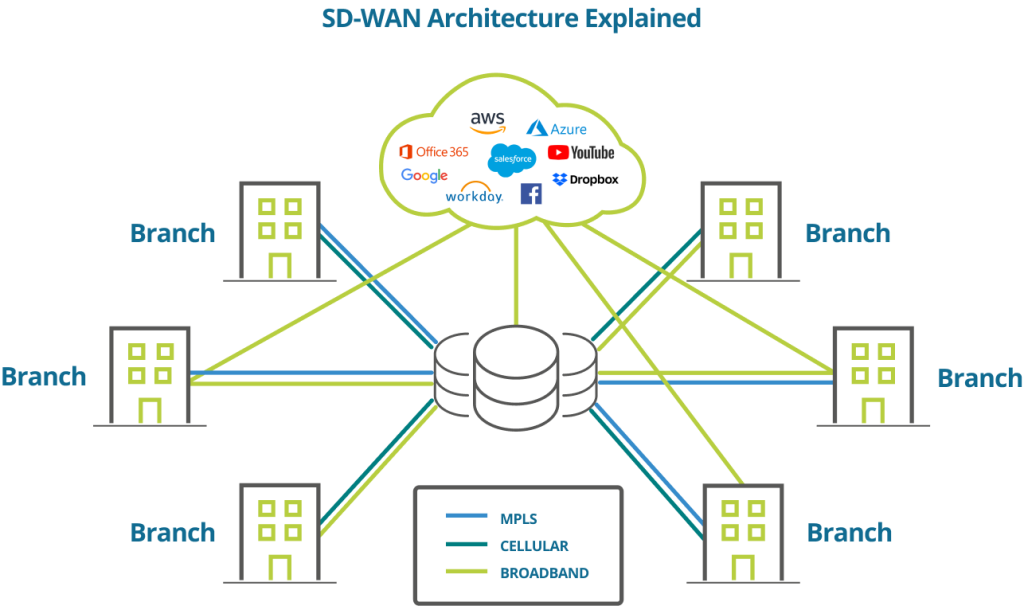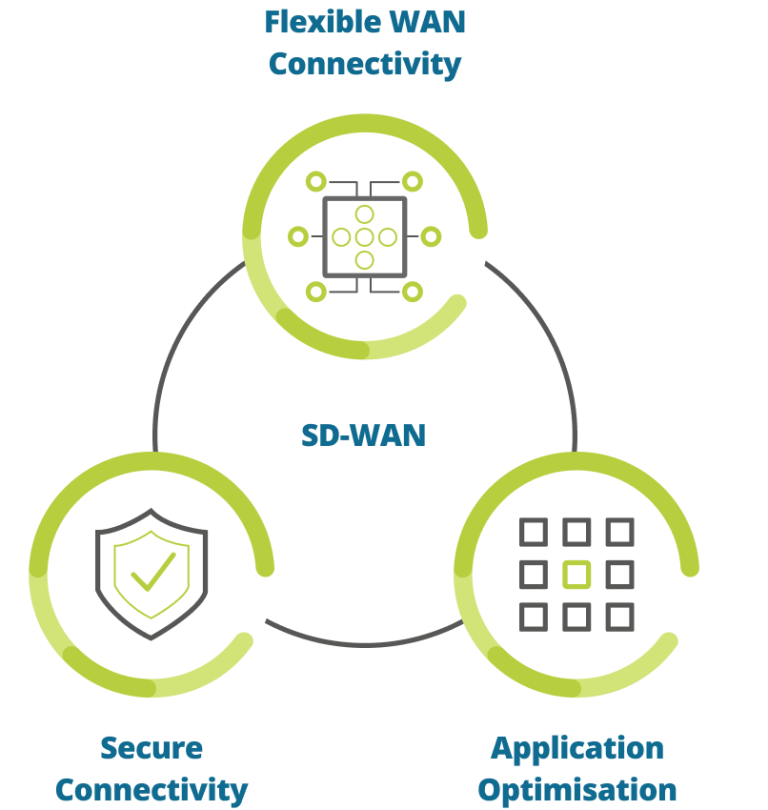Navigating Travel Industry Risks with Intelligent Communications
We’re going to explore some real-life unforeseen circumstances that the travel industry has had to navigate and how intelligent communications solut...
Software-Defined Wide Area Network (SD-WAN) can drastically improve overall network performance, security and management, especially if you have multiple branches spread across wide distances, or make use of data-hungry, cloud-based programs constantly. Here are a few ways SD-WAN helps optimise your company’s network performance.

Traditional WAN directs bandwidth to users as and when they require it, with no consideration as to the speed and connectivity needed. With lots of users operating on the same network, connection speeds can suffer and applications cannot be used to their full effect as a result. SD-WAN, on the other hand, intelligently directs bandwidth along virtual lines to best serve the user and the application.
For example, if a worker is using a data-heavy application, such as video conferencing software, they require more bandwidth than someone simply sending emails. SD-WAN identifies which task requires greater bandwidth and intelligently directs it appropriately. With traditional WAN, bandwidth is distributed without preference, meaning those using more intense programs may suffer from very slow speeds and ineffective applications if the network is busy.
This is very useful for businesses requiring workers to utilise very data-heavy applications like VOIP and UCaaS. With SD-WAN, VOIP and UCaaS users can enjoy consistent and reliable bandwidth, with the knowledge they’ll always have the appropriate speeds, as and when they need them.

One of the many limitations of traditional WANs is their reliance on hardware and physical lines to transport data. However, when data is being moved in excessive amounts every second, these lines lack the capacity to meet the needs of growing businesses and to help them run smoothly and efficiently while keeping network performance as optimised as possible.
As SD-WAN is software-based, there’s no reliance on physical hardware, and businesses are free to add multiple, virtual broadband lines quickly, cheaply and easily, giving room for extra bandwidth and network traffic. This opens the data capabilities, allowing them to further take advantage of cloud-based software and UCaaS systems that would have otherwise struggled to run. As lag and downtime will be greatly reduced as a result, businesses can expect to experience an uptake in network performance per user and in productivity across multiple locations.
MPLS (Multiprotocol Label Switching) has been a popular option for businesses seeking to efficiently manage their network traffic for maximum productivity. It works by using special hardware routers that are designed to direct network traffic along specific paths on a private network, to reduce latency and efficiency issues. However, because they’re reliant on physical lines and hardware, they’re not the most cost-effective solution on the market and can take time to install, as well as struggling to manage some of the more data-heavy applications. This is in comparison with SD-WAN, which can optimise network traffic and intelligently direct it down various paths without the need for physical lines, making it a much cheaper alternative.

Most traditional network security operates on a reactive basis, in which a network threat is only neutralised once it has attempted an attack. This isn’t the most efficient approach, as it can often result in businesses needing to repair damage that’s already occurred and mitigate similar damage that can be caused in the future, which can cost businesses time and funding. However, SD-WAN presents the opportunity to adopt more up-to-date, intelligent defence systems like SSL decryption, enterprise-level firewalls, ID-based firewalls, intrusion prevention, URL filtering, and Advanced Malware Protection.
Advanced Malware Protection (AMP) not only detects and removes malware threats from your network, but it can also analyse file activity across a much broader range, encompassing multiple networks, to defend against threats on a much wider scale. This is perfect for businesses with multiple branches that are all linked by SD-WAN connections. On top of this, intelligent firewalls can be used in tandem with SD-WAN to consistently monitor network activity and eliminate threats before they’ve even had the chance to launch an attack against the network. Using machine learning, these firewalls will then onboard that activity and “learn” to defend against similar attacks in the future.

As traditional networks are tethered to physical lines and hardware, there are limitations as to how the network can be deployed across a business, with limited control available for managers who are based away from specific branches. However, SD-WAN doesn’t give you such limitations. As it is software-based, you’re able to deploy and manage SD-WAN networks however you see fit. On-premise controls may be more suitable to large organisations with many branches spread across wide distances, as they offer more control and adaptability depending on the needs of each specific location.
Alternatively, businesses may opt for an entirely cloud-based deployment, for ease of access to software and data on a company-wide basis. A third option would be to remove the responsibility of managing the SD-WAN entirely and outsource the management to a third-party company. This can be useful for businesses that don’t have the resources to manage everything in-house.
Despite working over large geographical distances and multiple locations, SD-WAN administrators can make important administrative network, software and device changes from a singular location, rather than relying on the managers or technicians at each individual branch to do so. This centralised management process streamlines business efforts and ensures all employees are working under the same conditions that are conducive to productivity. An administrator working from one location could make changes to the background operations of various devices from hundreds of miles away, making sure they’re all performing at optimum efficiency. Whereas having a technician visit each location would be time-consuming and costly in comparison.

Software that could be accessed by multiple branches of a company used to be hosted exclusively on servers at data centres, which could be connected to by users on a traditional WAN through dedicated MLPS lines. However, in a world where software is increasingly being hosted on cloud systems, traditional WAN isn’t providing the speed and reliability many companies need to stay productive. With SD-WAN, businesses can take full advantage of cloud-based software and other data-hungry needs by eliminating the limitations placed on applications by data centres, by using software to intelligently direct data and services between branches and data centres for optimum speed and company productivity.
If your business is struggling with lagging speeds and unacceptable performance from cloud-based applications, and if you’re still working with the limitations of traditional lines or outdated networks, a move to SD-WAN will give you the flexibility and bandwidth you need for your business to collaborate and perform at its best. At Elite Group, we are experts in all areas of business technology, including SD-WAN, and are ready and waiting to help your company onboard the technology and reap the benefits as quickly as possible. If you’d like to know more about how SD-WAN could change your business for the better, speak to an Elite Group expert today.